Shanghai Gallery of Art-Chen Wenbo Solo Exhibition
发起人:Jessie.Xie 回复数:1
浏览数:11133
最后更新:2009/12/15 13:37:26 by art-pa-pa
ABIO-VIEW
Chen Wenbo Solo Exhibition
Curator: Bao Dong
Duration: Dec 12th, 2009 – January 28th, 2010
Opening Reception: Saturday, December 12th, 6 – 8pm
Location: Shanghai Gallery of Art @ Three on the Bund
Address: No.3 the Bund 3rd Floor 3 Zhongshan Dong Yi Road Shanghai
Chen Wenbo’s painting practice involves a self-sufficient visual activity, the viewing devoid of the object and subject, in which neither the will to truth nor the aesthetic determination can be found - the sense of the visual becomes the content of viewing. Therefore, Chen Wenbo’s paintings do not represent any external reality or internal emotions, but an abio-view, a blind yet dazzling visuality.
This suggests that Chen Wenbo’s work has become part of the society of the spectacle. His creation also gives prominence to the visual symptom as manifested in the present culture, as well as a vacillating sense of the visual free of will. As far as the artist is concerned, the gesture of representing and reinforcing this kind of visual symptom denotes a sophisticated stance of critique, which is to provoke a reflexive thinking over the established concept of “Subject” through revealing the absence of the subject.
Curatorial Statement:
Inorganic vision - endless enjoyment
We aren’t going to explain a painting itself: We explain the comments on a painting. Or, to be accurate, we can only explain after we consider verbalism and go into particulars.
by Baxandall
People may see some social content in Chen Wenbo’s painting, specific scenes that only exist in urban lives: empty bottles, spilt beverages, keys on plates, the car you see in a rearview mirror or a screen that shows stock market indexes. Together, these disparate scenes make up an urban life. Yet this social content is only an introduction for Chen Wenbo. He uses subjects that people are familiar with to illustrate the primary focus of his work: modern visual scenes.
Here, we separate themes and subjects to help the artwork break away from a traditional rigid analytical framework. In this manner, we can fully understand the artwork we see before we start talking about its meaning. Also, this separation compels us to examine the true content of the work, that is, how the artist structures the theme. To Chen Wenbo, this separation is extremely important, because the meaning of the subject in his work is clear only when we see his subject in the presence of a theme. Otherwise, we would just view him as a conventional still life painter. In fact, historical still life paintings were not intended to present the still life itself. For example, Bryson thought that affluence was the theme of Holland 17th century still life painting movement. And Fry thought Cezanne’s still life painting depicted his concept of form.
When studying Chen Wenbo’s paintings, what strikes me first is the presence of light. The scenes he paints of urban life are intended to make different types of light stand out: the effect of light gleaming, light shining from above, the light source itself and its hue. The subjects themselves are not that meaningful. Even so, the reason Chen Wenbo’s likes glossy things is probably because they can illustrate light’s dramatic qualities, which bring out the meaning of his subjects. This is similar to how Cezanne liked onions and apples that didn’t decay easily and rarely painted flowers that died easily. This is not because of the symbolic meanings are different but because the distinct structures of onions and apples could illustrate Cezanne’s visual concept. (In contrast, Monet had a passion for painting flowers.) Therefore, Chen‘s finest works are those that depict surfaces of mirrors, glasses, plastics, metals and varnished objects. In these works, the energy of light is shown to the full extent. In a highly glistening environment, the form of such subjects almost disappears. They are not tangible anymore. They become purely visual objects.
Wolfflin once used the difference between tangible concepts and visual concepts to comprehend the transformation of painting language in art history. The former concept means to depict subjects according to their appearance in reality and the latter one means to depict subjects according to how it appears at a given moment. These concepts are enlightening to Chen Wenbo’s painting. One of the visual examples Wolfflin raised is how Hals treated the lace collar as a white light. However, Chen Wenbo’s work differs markedly in technique. Chen Wenbo emphasizes light not to create the reality of perception but to peel subjective perception off objective reality. The visuals Chen emphasizes do not include the substantiality of the object.
In fact, making light stand out is intended to emphasize the act of seeing. (Not saw or seem) Thus, the seen object must belong to the vision itself. Even the object itself is not really necessary. The vision itself becomes a visual subject. Chen Wenbo emphasizes light and seeing but he is not concerned with the form and substantiality of the subjects. Here, he builds his visual theme, a kind of dazzling and blind visualization.
Even this kind of vision lacks a theme. It doesn’t include the experience of appreciating the arts. First, this is shown in the rejection of drawing nature, prohibition of strokes, and prohibition of the appearance of the painter’s body to prevent viewers who are accustomed to seeking the personal myth - from the picture to the painter. This is also an expression of giving up the “formal language”. That is, to give up the initiative control of the picture structure and give up the will of the objective, to cease mental games of imagination and perception. This is also to say, Chen Wenbo’s paintings don’t refer to the objective (subjects or meaning) nor refer to people (in physical form or mental images). They offer viewers one surface - a world that produces an enjoyment of no information - an enjoyment of peeling away symbols.
It is enjoyment (jouissance), not pleasure (plaisir) according to Roland Barthes and it is surely also Lacan’s view. Pleasure is an objective consciousness that operates in its symbolic world but enjoyment is an encounter with bigger objectives. In enjoyment, the objective (consciousness) is almost broken by the reality. Or enjoyment is a kind of secretion from the gap of objective consciousness. Why is there an enjoyment that does not point to things or people? It is because it’s just the result of the objective’s imagination (the subject is a kind of imaginative identity) collapsing. It’s also the result of objective and subjective structures collapsing. The world turns by itself. We are all unrelated.
So the vision becomes a series of incidents. Seeing becomes the plural form of otherness. Gazing is not possible anymore. It morphs into multiple glances - continuous visual activities or even visual objectives, for example, the classical meaning of painting is not possible anymore. In this level of meaning, it is difficult to call Chen Wenbo’s work painting. It is only a safer way for people to protect their senses of security. In other words, this has threatened the concept of painting.
However, Chen Wenbo’s work is not iconic, either. At many times, icons still refer to a thing or meaning. So to be specific, Chen Wenbo’s work is not iconic but pictographic. His works derive from pure form photography. The work viewers see is only part of Chen Wenbo’s output but not the outcome. In Chen Wenbo’s work, creation, if this is applicable, is not intended to build a meaningful unity anymore but rather to present a meaningful vacancy to make viewers’ appreciation part of the creation. During the process, the concept of the works has changed from organic to inorganic. The pieces (visual and meaningful) we see – just like the recent work of Chen Wenbo’s – in fact, are the gap between those pieces.
The visual enjoyment flushes out as an incident from these gaps. To be specific, we must comprehend Chen Wenbo’s painting (we have to temporarily use this term) as a single among all the plurals, not an independent one. Furthermore, we have to see his plural painting as a gateway to enjoyment. It’s like we have viewed his subject as an introduction. This means that the visual enjoyment is produced by the watching system that Chen Wenbo provides. It’s not a given; rather, it is triggered.
What kind of seeing system is this? This origin is in the visual technicalities. In visual technology, vision itself becomes an entity and it’s defined by technology. So the vision itself becomes the subject of the vision. This is why people are so eager to see the photos they just took, why people want to see through LCD screens but not binoculars, why people feel excited when they hear the sound of the camera’s shutter. Hence, seeing has no external entities. Seeing occurs regardless of those external substantiating factors. So the key standard for Chen Wenbo to choose photos is whether there is a gleam. Or, he can shoot from the angle that can create a gleam and identity and completeness are not in his consideration.
The extreme model of this kind of watching system is Baudrillard’s mirror hall. The reflection of the mirror is the mirror. Seeing is an inorganic operation. Visual sense is not intended to build relationships between people and people, and people and things. Seeing is only from subject to subject, ultimately endless subjects.
This is an endless and almost crazy vision. Isn’t producing enjoyment a way to avoid being insane?
Bao Dong
November 19, 2009
Artist Biography
1969 Born in Chonqing, China
1990 Graduated from Sichuan Academy of Fine Art, Chongqing
Currently lives and works in Beijing
Selected Solo Exhibitions
2009 Broken Series, UCCA Beijing
2008 Epidemiology, Galerie Michael Schultz, Berlin, Germany
Asian Rays, PKM Gallery Beijing, Beijing
2006 On the green, Courtyard Gallery, Beijing
2003 Back Door, He Xiangning Art Museum, Shenzhen
2000 Vitamine Z: Chen Wenbo Solo Exhibition, Galerie LOFT, Paris, France
Selected Group Exhibitions
2009 Daily Rituals, Shanghai Gallery of Art, Shanghai
The Second Reality, Meridian International Center, Washington, USA
2008 SH Contemporary, Shanghai Gallery of Art, Shanghai
ev+a Exhibition of Visual Art, Limerick, Ireland
The Sichuan Movement, Museum Nasional, Jakarta, Indonesia
Portraying Food (and the Absence of It), Walsh Gallery, Chicago, USA
Our Future, Ullens Center for Contemporary Art, Beijing
Empty, Primo Marella Gallery, Milan, Italy
Poznan Mediations international Biennale of contemporary Art”, Poznan, Poland
2007 Moscow Biennale of Contemporary Art, Moscow, Russia
Chinese Vanguard, Madrid, Spain
Thermocline of Art - New Asia's Waves, ZKM Center for Art and Media, Karlsruhe, Germany
From New Figurative Image to New Painting, Tang Contemporary Art, Beijing
Negative Re-Actions, Shanghai Gallery of Art, Shanghai
Floating - New Generation of Art in China, National Museum of Contemporary Art, Seoul, Korea
Sport in Art, Museum of Contemporary Art, Shanghai
Energy: Spirit Body Material, Beijing Today Art Museum, Beijing
New Painting from China, Kamakura Gallery, Kanagawa, Japan
Departing from the Southwest, Guangdong Musuem of Art, Guangzhou
2006 Art Basel 37, Gallery Hyundai, Basel, Switzerland
Contemporary China, PKM Gallery, Seoul, Korea
Shanghai Biennale, Shanghai
Beyond Dimension:Chinese New Painting, Nanjing Square Gallery of Contemporary Art, Nanjing, China
Body and History, Heng Center, Nanjing
Development of Realism:Oil Paintings from Mainland China after 1978, Taipei City Art Museum, Taiwan
2005 The Biennale of Contemporary Chinese Art in Montpellier, Montpellier, France
Mahjong: The Sigg Collection, Kunstmuseum Bern, Bern, Switzerland
The Second Triennial of Chinese Art, Nanjing Museum, Nanjing
Follow Me, Chinese Contemporary Art, Mori Art Museum, Tokyo, Japan
The Biennale of Beijing, Beijing
In the Deep of Reality, Hangzhou, China
Grounding Reality - New Chinese Contemporary, Seoul Art Center, Seoul, Korea
Frieze Art Fair, Courtyard Gallery, London, UK
2004 All Under Heaven - China now!, Koninklijk Museum, Antwerp, Belgium
Fiac 2004, Paris, France
Frieze Art Fair, Courtyard Gallery, London, UK
East of the South in the West/West of the South in the East, Villa Arson, Nice, France
Temporality, LA Gallery, Beijing
Object System: Doing Nothing, ARCO2004, Madrid, Spain
2003 Out of Focus, 25000 Cultural Transmission Center, Beijing
Chinart, Museo del Arte Contemporanea di Roma, Rome, Italy
Chinart, Ludwig Museum, Budapest, Hungary
2002 Too Much Flavor, 3H Art Center, Shanghai
Chinese Modernity, Foundation Armando Alvares Penteado(FAAP), Sao Paulo, Brazil
Paris-Pekin, Espace Pierre Cardin, Paris, France
Chinart, Museum Kuppersmuhle Sammlung Grothe, Duisburg, Germany
Guangzhou Triennial, Guangdong Art Museum, Guangzhou
Mirage, Suzhou Art Museum, Suzhou, China
2001 Next Generation, City Art Center, Paris, France
On Boys and Girls, Upriver Loft, Kunming, China Soobin Art Gallery, Singapore
1st Chengdu Biennale, Modern Art Museum, Chengdu, China
2000 Contemporary Chinese Portraits, Espace Culturel Francois Mitterand, Perogueux, France
Future, Contemporary Art Center of Macao, Macao
Individual and Society in Art, Guangdong Province Art Museum, Guangdong, China
Ordinary and the Extraordinary, Shanghai
1999 Academic Exhibition, Upriver Gallery, Chengdu, China
Representing the people, Laing Gallery, Newcastle upon Tyne; MAC, Birmingham, UK
Beauty Like Materialism:'99 China New Conceptual Art Exhibition, Art department of East China Teacher University, Shanghai
Poly Phenolrene, Bow Gallery, Beijing
Starting a new channel in 1999, Dongyu Art Museum, Shenyang, China
Post-Sensibility: Alien Bodies and Delusion, Shaoyaoju, Beijing
Chinese Contemporary Art Exhibition, Paris Art Center, Paris, France
1998 Confused, Contemporary Art Fair Amsterdam, The Netherlands
Alien Phenolrene, Alternative space, Beijing
1997 Chinese Video Art 1997, CIFA Gallery Central Academy of Fine Arts, Beijing
‘97 ART COLOGNE, Gallery Urs Meile, Cologne, Germany
1996 South Western Conceptual Art Show, Communications University, Chengdu, Sichuan Province, China
1994 Fragmentation, Sichuan Academy of Fine Arts, Chongqing, Sichuan Province, China
1993 China Oil Painting Biennale, China Art Gallery Beijing, Beijing
1992 The First Guangzhou Oil Painting Biennale, Guangzhou Exhibition Centre Guangzhou, Guangzhou, China
China Contemporary Art Documentation, Sichuan Province, China
Art Asian, Hong Kong Exhibition Center, Hong Kong
Chen Wenbo Solo Exhibition
Curator: Bao Dong
Duration: Dec 12th, 2009 – January 28th, 2010
Opening Reception: Saturday, December 12th, 6 – 8pm
Location: Shanghai Gallery of Art @ Three on the Bund
Address: No.3 the Bund 3rd Floor 3 Zhongshan Dong Yi Road Shanghai
Chen Wenbo’s painting practice involves a self-sufficient visual activity, the viewing devoid of the object and subject, in which neither the will to truth nor the aesthetic determination can be found - the sense of the visual becomes the content of viewing. Therefore, Chen Wenbo’s paintings do not represent any external reality or internal emotions, but an abio-view, a blind yet dazzling visuality.
This suggests that Chen Wenbo’s work has become part of the society of the spectacle. His creation also gives prominence to the visual symptom as manifested in the present culture, as well as a vacillating sense of the visual free of will. As far as the artist is concerned, the gesture of representing and reinforcing this kind of visual symptom denotes a sophisticated stance of critique, which is to provoke a reflexive thinking over the established concept of “Subject” through revealing the absence of the subject.
Curatorial Statement:
Inorganic vision - endless enjoyment
We aren’t going to explain a painting itself: We explain the comments on a painting. Or, to be accurate, we can only explain after we consider verbalism and go into particulars.
by Baxandall
People may see some social content in Chen Wenbo’s painting, specific scenes that only exist in urban lives: empty bottles, spilt beverages, keys on plates, the car you see in a rearview mirror or a screen that shows stock market indexes. Together, these disparate scenes make up an urban life. Yet this social content is only an introduction for Chen Wenbo. He uses subjects that people are familiar with to illustrate the primary focus of his work: modern visual scenes.
Here, we separate themes and subjects to help the artwork break away from a traditional rigid analytical framework. In this manner, we can fully understand the artwork we see before we start talking about its meaning. Also, this separation compels us to examine the true content of the work, that is, how the artist structures the theme. To Chen Wenbo, this separation is extremely important, because the meaning of the subject in his work is clear only when we see his subject in the presence of a theme. Otherwise, we would just view him as a conventional still life painter. In fact, historical still life paintings were not intended to present the still life itself. For example, Bryson thought that affluence was the theme of Holland 17th century still life painting movement. And Fry thought Cezanne’s still life painting depicted his concept of form.
When studying Chen Wenbo’s paintings, what strikes me first is the presence of light. The scenes he paints of urban life are intended to make different types of light stand out: the effect of light gleaming, light shining from above, the light source itself and its hue. The subjects themselves are not that meaningful. Even so, the reason Chen Wenbo’s likes glossy things is probably because they can illustrate light’s dramatic qualities, which bring out the meaning of his subjects. This is similar to how Cezanne liked onions and apples that didn’t decay easily and rarely painted flowers that died easily. This is not because of the symbolic meanings are different but because the distinct structures of onions and apples could illustrate Cezanne’s visual concept. (In contrast, Monet had a passion for painting flowers.) Therefore, Chen‘s finest works are those that depict surfaces of mirrors, glasses, plastics, metals and varnished objects. In these works, the energy of light is shown to the full extent. In a highly glistening environment, the form of such subjects almost disappears. They are not tangible anymore. They become purely visual objects.
Wolfflin once used the difference between tangible concepts and visual concepts to comprehend the transformation of painting language in art history. The former concept means to depict subjects according to their appearance in reality and the latter one means to depict subjects according to how it appears at a given moment. These concepts are enlightening to Chen Wenbo’s painting. One of the visual examples Wolfflin raised is how Hals treated the lace collar as a white light. However, Chen Wenbo’s work differs markedly in technique. Chen Wenbo emphasizes light not to create the reality of perception but to peel subjective perception off objective reality. The visuals Chen emphasizes do not include the substantiality of the object.
In fact, making light stand out is intended to emphasize the act of seeing. (Not saw or seem) Thus, the seen object must belong to the vision itself. Even the object itself is not really necessary. The vision itself becomes a visual subject. Chen Wenbo emphasizes light and seeing but he is not concerned with the form and substantiality of the subjects. Here, he builds his visual theme, a kind of dazzling and blind visualization.
Even this kind of vision lacks a theme. It doesn’t include the experience of appreciating the arts. First, this is shown in the rejection of drawing nature, prohibition of strokes, and prohibition of the appearance of the painter’s body to prevent viewers who are accustomed to seeking the personal myth - from the picture to the painter. This is also an expression of giving up the “formal language”. That is, to give up the initiative control of the picture structure and give up the will of the objective, to cease mental games of imagination and perception. This is also to say, Chen Wenbo’s paintings don’t refer to the objective (subjects or meaning) nor refer to people (in physical form or mental images). They offer viewers one surface - a world that produces an enjoyment of no information - an enjoyment of peeling away symbols.
It is enjoyment (jouissance), not pleasure (plaisir) according to Roland Barthes and it is surely also Lacan’s view. Pleasure is an objective consciousness that operates in its symbolic world but enjoyment is an encounter with bigger objectives. In enjoyment, the objective (consciousness) is almost broken by the reality. Or enjoyment is a kind of secretion from the gap of objective consciousness. Why is there an enjoyment that does not point to things or people? It is because it’s just the result of the objective’s imagination (the subject is a kind of imaginative identity) collapsing. It’s also the result of objective and subjective structures collapsing. The world turns by itself. We are all unrelated.
So the vision becomes a series of incidents. Seeing becomes the plural form of otherness. Gazing is not possible anymore. It morphs into multiple glances - continuous visual activities or even visual objectives, for example, the classical meaning of painting is not possible anymore. In this level of meaning, it is difficult to call Chen Wenbo’s work painting. It is only a safer way for people to protect their senses of security. In other words, this has threatened the concept of painting.
However, Chen Wenbo’s work is not iconic, either. At many times, icons still refer to a thing or meaning. So to be specific, Chen Wenbo’s work is not iconic but pictographic. His works derive from pure form photography. The work viewers see is only part of Chen Wenbo’s output but not the outcome. In Chen Wenbo’s work, creation, if this is applicable, is not intended to build a meaningful unity anymore but rather to present a meaningful vacancy to make viewers’ appreciation part of the creation. During the process, the concept of the works has changed from organic to inorganic. The pieces (visual and meaningful) we see – just like the recent work of Chen Wenbo’s – in fact, are the gap between those pieces.
The visual enjoyment flushes out as an incident from these gaps. To be specific, we must comprehend Chen Wenbo’s painting (we have to temporarily use this term) as a single among all the plurals, not an independent one. Furthermore, we have to see his plural painting as a gateway to enjoyment. It’s like we have viewed his subject as an introduction. This means that the visual enjoyment is produced by the watching system that Chen Wenbo provides. It’s not a given; rather, it is triggered.
What kind of seeing system is this? This origin is in the visual technicalities. In visual technology, vision itself becomes an entity and it’s defined by technology. So the vision itself becomes the subject of the vision. This is why people are so eager to see the photos they just took, why people want to see through LCD screens but not binoculars, why people feel excited when they hear the sound of the camera’s shutter. Hence, seeing has no external entities. Seeing occurs regardless of those external substantiating factors. So the key standard for Chen Wenbo to choose photos is whether there is a gleam. Or, he can shoot from the angle that can create a gleam and identity and completeness are not in his consideration.
The extreme model of this kind of watching system is Baudrillard’s mirror hall. The reflection of the mirror is the mirror. Seeing is an inorganic operation. Visual sense is not intended to build relationships between people and people, and people and things. Seeing is only from subject to subject, ultimately endless subjects.
This is an endless and almost crazy vision. Isn’t producing enjoyment a way to avoid being insane?
Bao Dong
November 19, 2009
Artist Biography
1969 Born in Chonqing, China
1990 Graduated from Sichuan Academy of Fine Art, Chongqing
Currently lives and works in Beijing
Selected Solo Exhibitions
2009 Broken Series, UCCA Beijing
2008 Epidemiology, Galerie Michael Schultz, Berlin, Germany
Asian Rays, PKM Gallery Beijing, Beijing
2006 On the green, Courtyard Gallery, Beijing
2003 Back Door, He Xiangning Art Museum, Shenzhen
2000 Vitamine Z: Chen Wenbo Solo Exhibition, Galerie LOFT, Paris, France
Selected Group Exhibitions
2009 Daily Rituals, Shanghai Gallery of Art, Shanghai
The Second Reality, Meridian International Center, Washington, USA
2008 SH Contemporary, Shanghai Gallery of Art, Shanghai
ev+a Exhibition of Visual Art, Limerick, Ireland
The Sichuan Movement, Museum Nasional, Jakarta, Indonesia
Portraying Food (and the Absence of It), Walsh Gallery, Chicago, USA
Our Future, Ullens Center for Contemporary Art, Beijing
Empty, Primo Marella Gallery, Milan, Italy
Poznan Mediations international Biennale of contemporary Art”, Poznan, Poland
2007 Moscow Biennale of Contemporary Art, Moscow, Russia
Chinese Vanguard, Madrid, Spain
Thermocline of Art - New Asia's Waves, ZKM Center for Art and Media, Karlsruhe, Germany
From New Figurative Image to New Painting, Tang Contemporary Art, Beijing
Negative Re-Actions, Shanghai Gallery of Art, Shanghai
Floating - New Generation of Art in China, National Museum of Contemporary Art, Seoul, Korea
Sport in Art, Museum of Contemporary Art, Shanghai
Energy: Spirit Body Material, Beijing Today Art Museum, Beijing
New Painting from China, Kamakura Gallery, Kanagawa, Japan
Departing from the Southwest, Guangdong Musuem of Art, Guangzhou
2006 Art Basel 37, Gallery Hyundai, Basel, Switzerland
Contemporary China, PKM Gallery, Seoul, Korea
Shanghai Biennale, Shanghai
Beyond Dimension:Chinese New Painting, Nanjing Square Gallery of Contemporary Art, Nanjing, China
Body and History, Heng Center, Nanjing
Development of Realism:Oil Paintings from Mainland China after 1978, Taipei City Art Museum, Taiwan
2005 The Biennale of Contemporary Chinese Art in Montpellier, Montpellier, France
Mahjong: The Sigg Collection, Kunstmuseum Bern, Bern, Switzerland
The Second Triennial of Chinese Art, Nanjing Museum, Nanjing
Follow Me, Chinese Contemporary Art, Mori Art Museum, Tokyo, Japan
The Biennale of Beijing, Beijing
In the Deep of Reality, Hangzhou, China
Grounding Reality - New Chinese Contemporary, Seoul Art Center, Seoul, Korea
Frieze Art Fair, Courtyard Gallery, London, UK
2004 All Under Heaven - China now!, Koninklijk Museum, Antwerp, Belgium
Fiac 2004, Paris, France
Frieze Art Fair, Courtyard Gallery, London, UK
East of the South in the West/West of the South in the East, Villa Arson, Nice, France
Temporality, LA Gallery, Beijing
Object System: Doing Nothing, ARCO2004, Madrid, Spain
2003 Out of Focus, 25000 Cultural Transmission Center, Beijing
Chinart, Museo del Arte Contemporanea di Roma, Rome, Italy
Chinart, Ludwig Museum, Budapest, Hungary
2002 Too Much Flavor, 3H Art Center, Shanghai
Chinese Modernity, Foundation Armando Alvares Penteado(FAAP), Sao Paulo, Brazil
Paris-Pekin, Espace Pierre Cardin, Paris, France
Chinart, Museum Kuppersmuhle Sammlung Grothe, Duisburg, Germany
Guangzhou Triennial, Guangdong Art Museum, Guangzhou
Mirage, Suzhou Art Museum, Suzhou, China
2001 Next Generation, City Art Center, Paris, France
On Boys and Girls, Upriver Loft, Kunming, China Soobin Art Gallery, Singapore
1st Chengdu Biennale, Modern Art Museum, Chengdu, China
2000 Contemporary Chinese Portraits, Espace Culturel Francois Mitterand, Perogueux, France
Future, Contemporary Art Center of Macao, Macao
Individual and Society in Art, Guangdong Province Art Museum, Guangdong, China
Ordinary and the Extraordinary, Shanghai
1999 Academic Exhibition, Upriver Gallery, Chengdu, China
Representing the people, Laing Gallery, Newcastle upon Tyne; MAC, Birmingham, UK
Beauty Like Materialism:'99 China New Conceptual Art Exhibition, Art department of East China Teacher University, Shanghai
Poly Phenolrene, Bow Gallery, Beijing
Starting a new channel in 1999, Dongyu Art Museum, Shenyang, China
Post-Sensibility: Alien Bodies and Delusion, Shaoyaoju, Beijing
Chinese Contemporary Art Exhibition, Paris Art Center, Paris, France
1998 Confused, Contemporary Art Fair Amsterdam, The Netherlands
Alien Phenolrene, Alternative space, Beijing
1997 Chinese Video Art 1997, CIFA Gallery Central Academy of Fine Arts, Beijing
‘97 ART COLOGNE, Gallery Urs Meile, Cologne, Germany
1996 South Western Conceptual Art Show, Communications University, Chengdu, Sichuan Province, China
1994 Fragmentation, Sichuan Academy of Fine Arts, Chongqing, Sichuan Province, China
1993 China Oil Painting Biennale, China Art Gallery Beijing, Beijing
1992 The First Guangzhou Oil Painting Biennale, Guangzhou Exhibition Centre Guangzhou, Guangzhou, China
China Contemporary Art Documentation, Sichuan Province, China
Art Asian, Hong Kong Exhibition Center, Hong Kong
EXHIBITION VIEWS
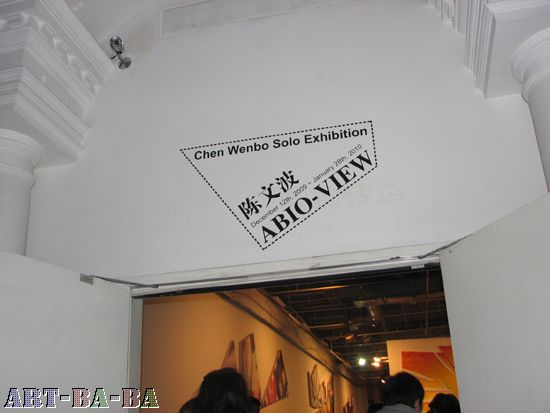
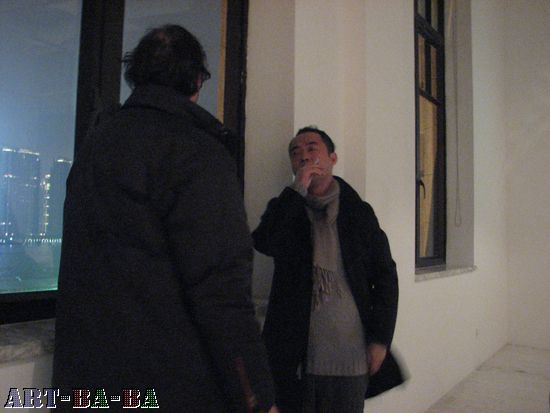
left, ShanghArt director Lorenz Helbling
right, artist Chen Wenbo
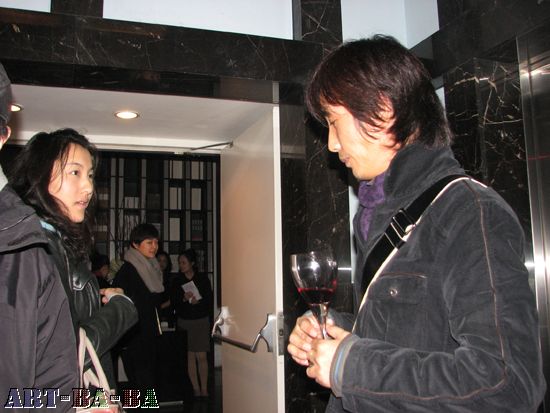
ShanghArt art director and artist Shi Yong
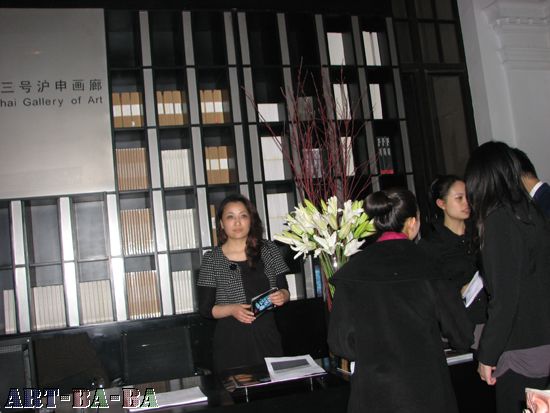
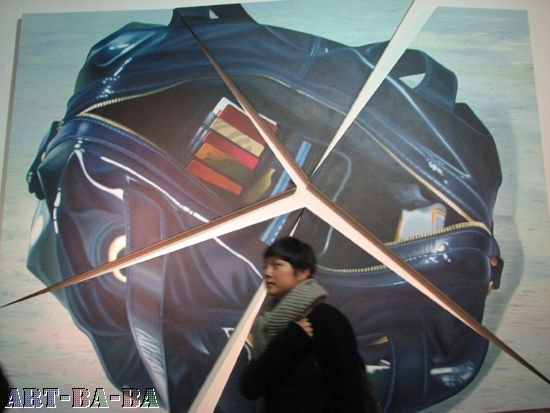
Art critic Lu Leiping
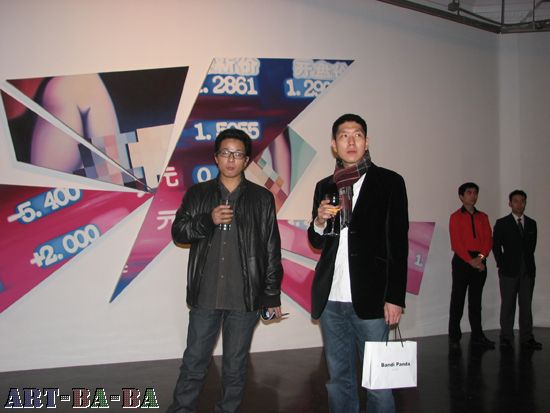
Left: Artist Zhang Qing
Right: David from Long March Space (Beijing)
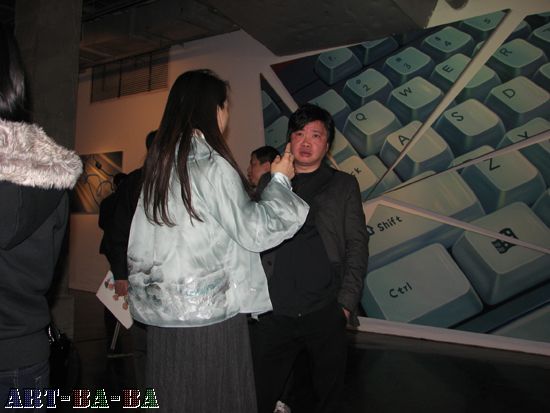
Artist Zhou Tiehai
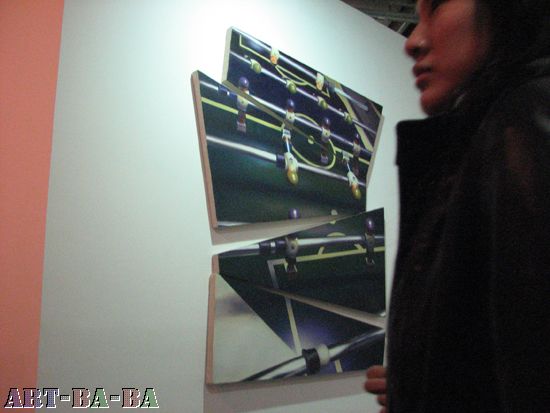
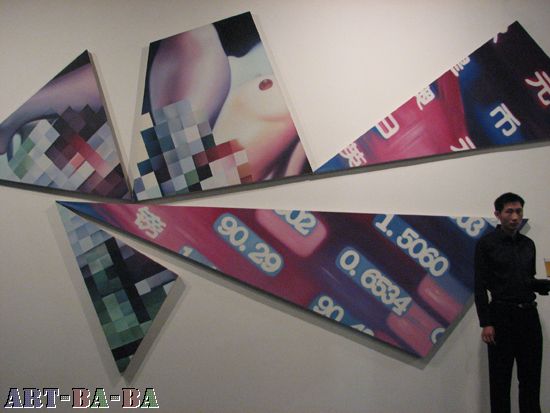
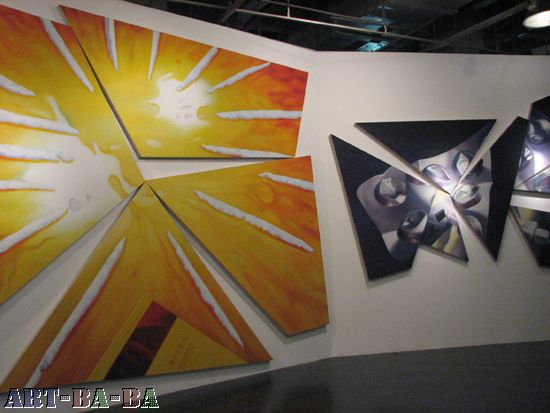
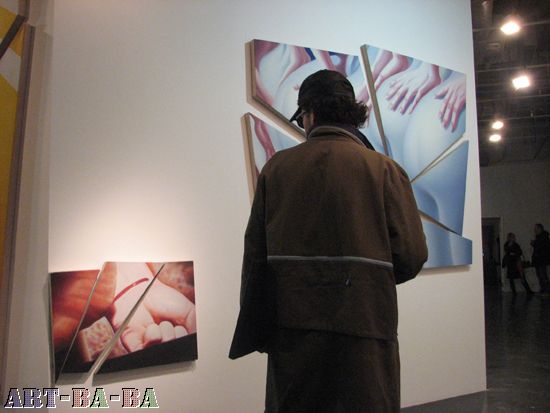
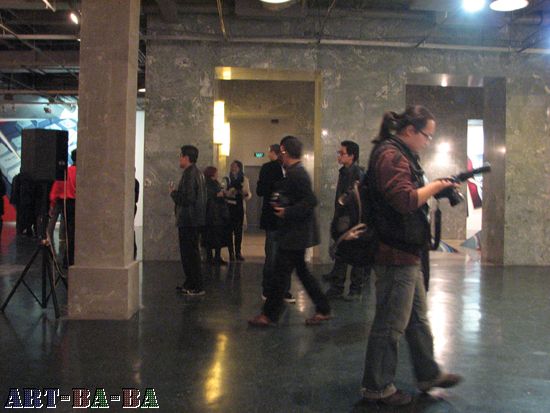
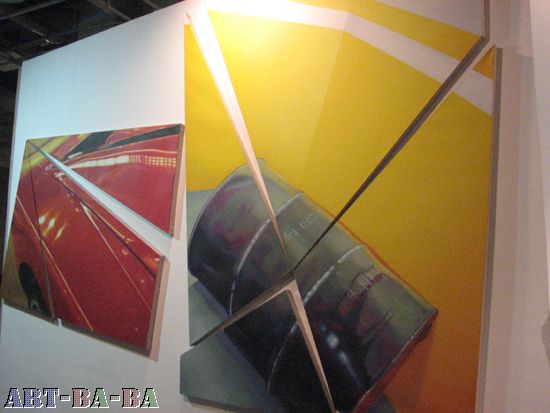
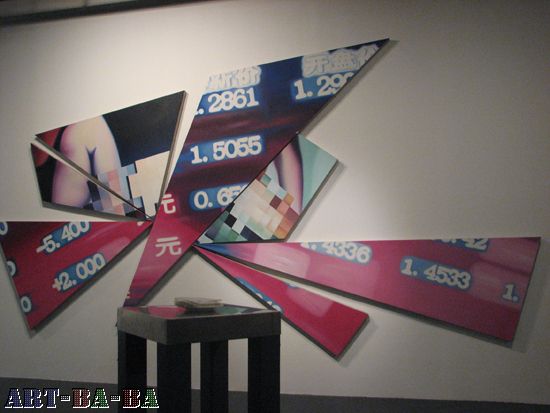
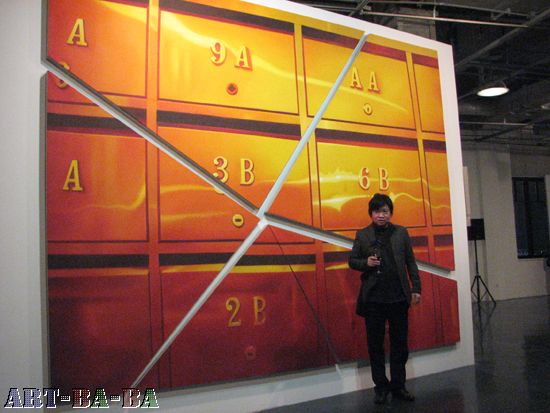
Artist Zhou Tiehai
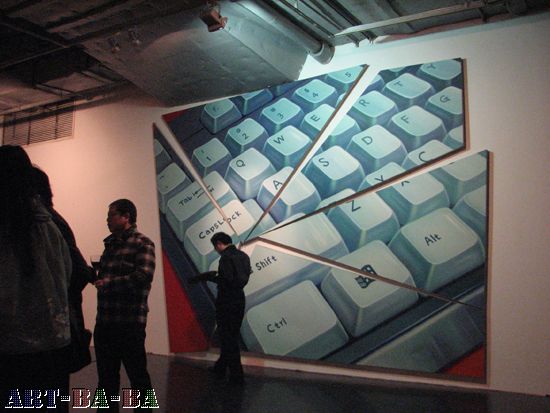
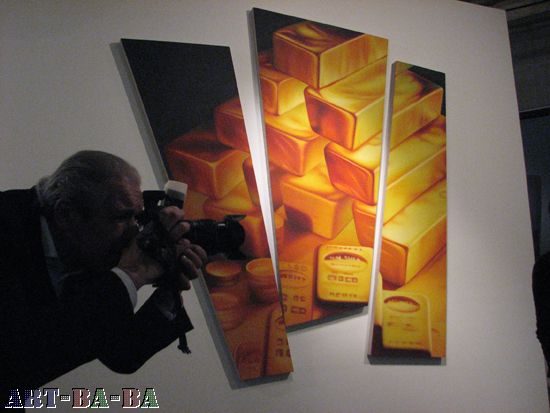
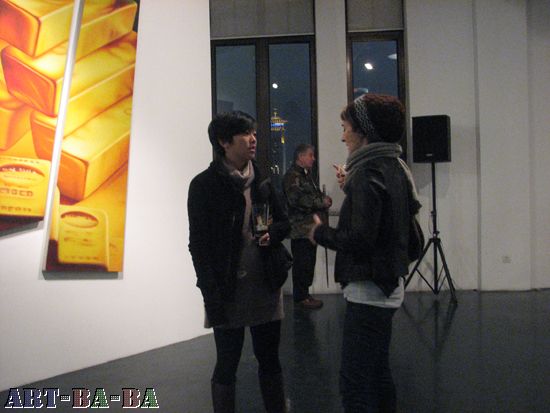
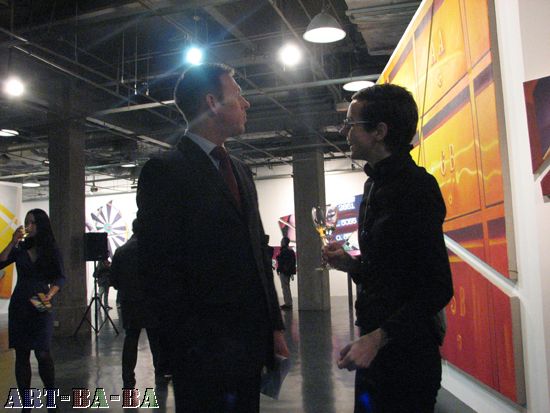
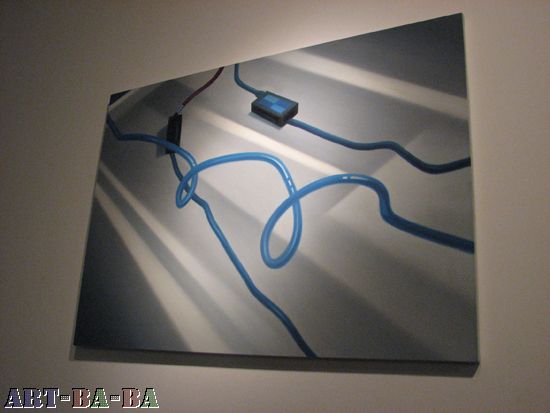
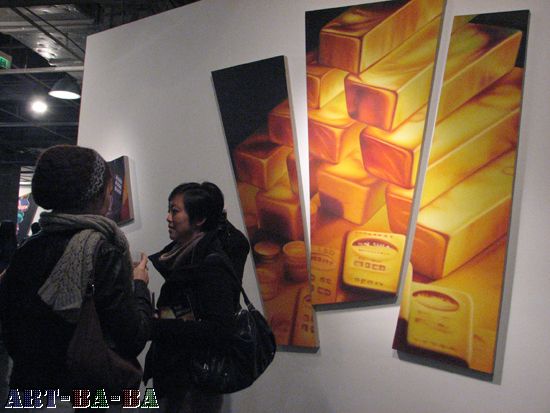
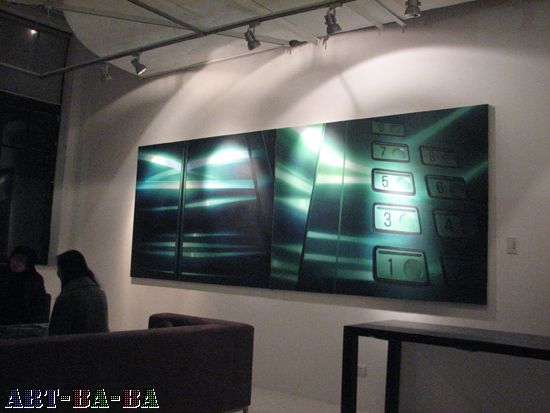
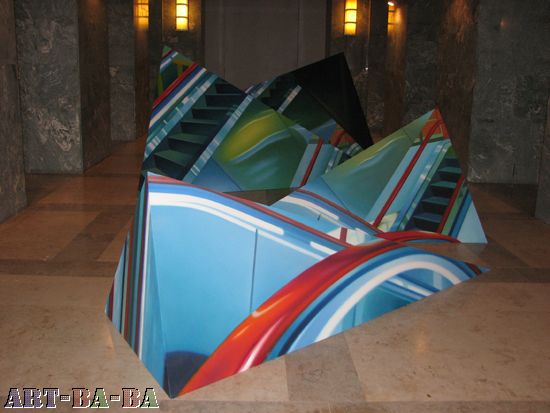
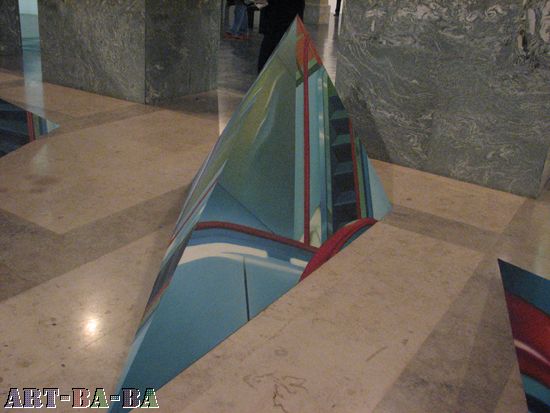
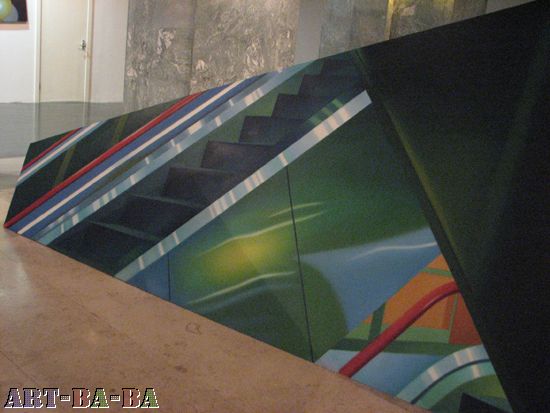
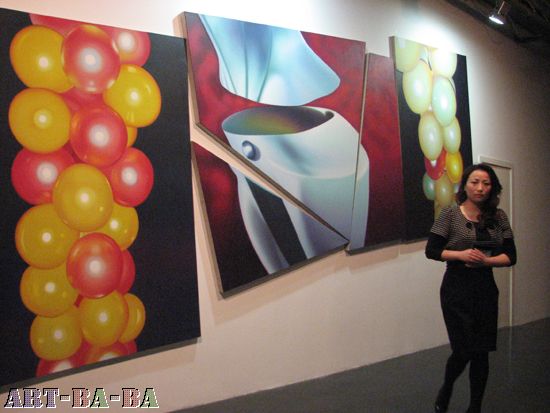
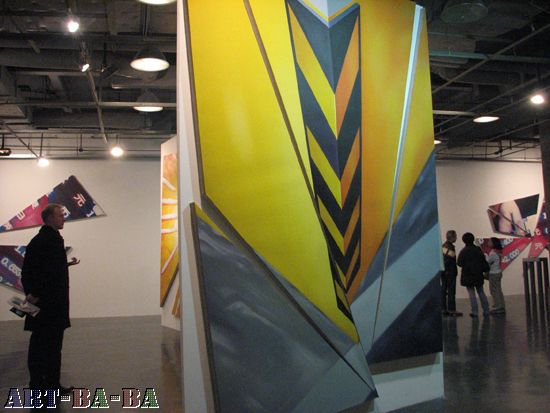
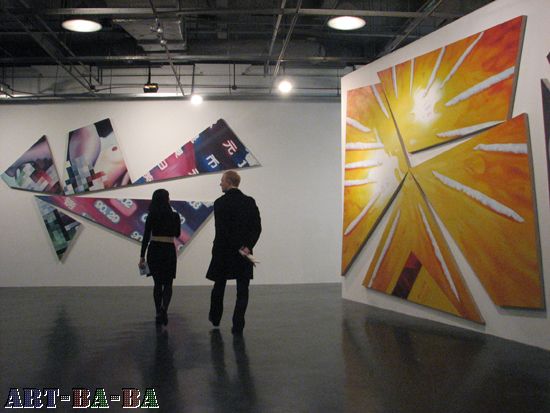
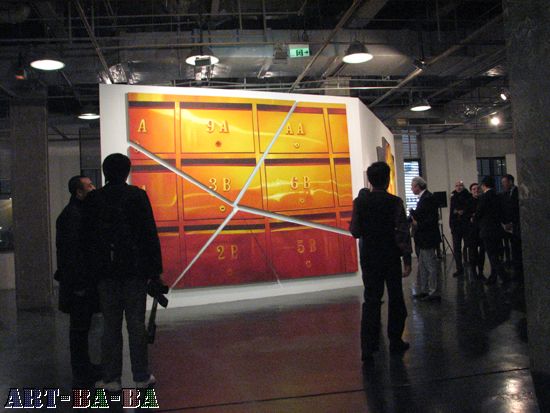
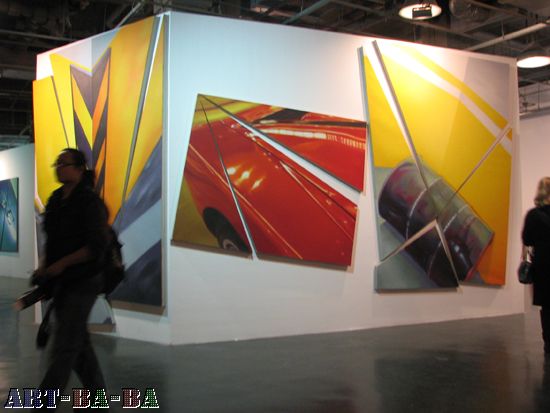
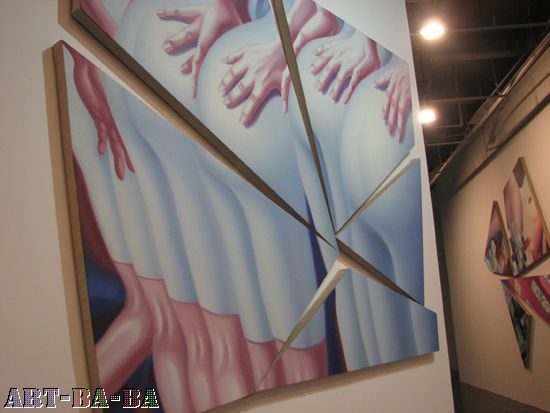
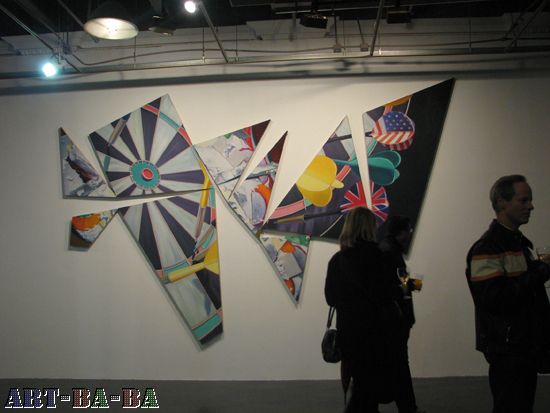
left, ShanghArt director Lorenz Helbling
right, artist Chen Wenbo
ShanghArt art director and artist Shi Yong
Art critic Lu Leiping
Left: Artist Zhang Qing
Right: David from Long March Space (Beijing)
Artist Zhou Tiehai
Artist Zhou Tiehai